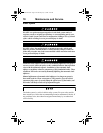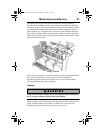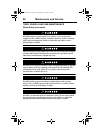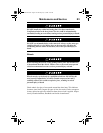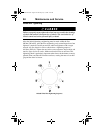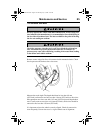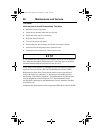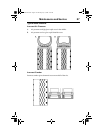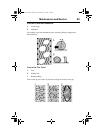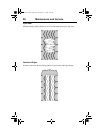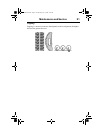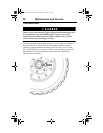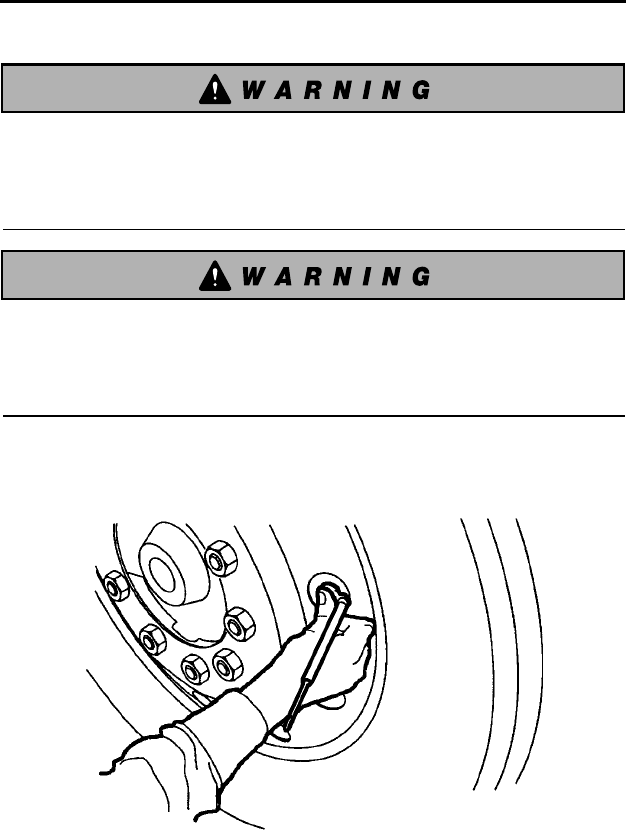
Maintenance and Service 85
Tire Inflation and Wear
DO NOT operate the vehicle with under-inflated tires. Always keep your
tires inflated to the manufacturer's recommendation. Increased flexing in
the tire sidewall produces heat. The heat can build to the point of blowing
the tire out causing an accident.
Check tire pressure when the tire is cool. Never bleed the air from hot
tires. Increased tire pressure measured in a hot tire is normal. Low
pressures may cause side wall flexing, resulting in increased heat, leading
to tire failure and vehicle accident.
Remove stones lodged in ribs or in between double-mounted wheels. Check
the tire pressure and leak-test the valve stems.
Measure the tread depth. The depth should not be less than 4.8 mm
(6/32-inch) on front tires and not less than 1.6 mm (2/32-inch) on drive tires.
Most premium steer tires start with 14.2 mm (18/32-inch) tread depth when
new. Usually remove steer tires at 4.8 mm (6/32-inch). Drive tires should be
removed at not less than 1.58 mm (2/32-inch).
It is important to have the wheels correctly aligned. Check for uneven tire
wear frequently. Uneven tire wear is a sign of wheels out of alignment.
USA22978.bk.book Page 85 Wednesday, July 9, 2008 9:09 AM




